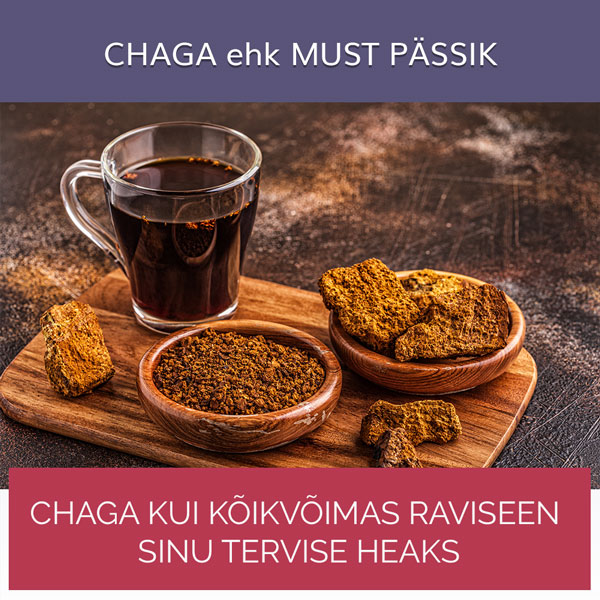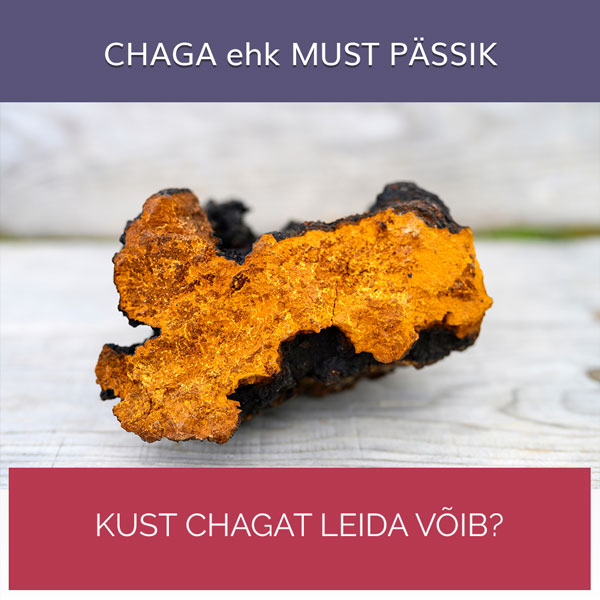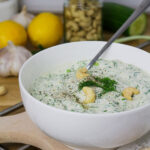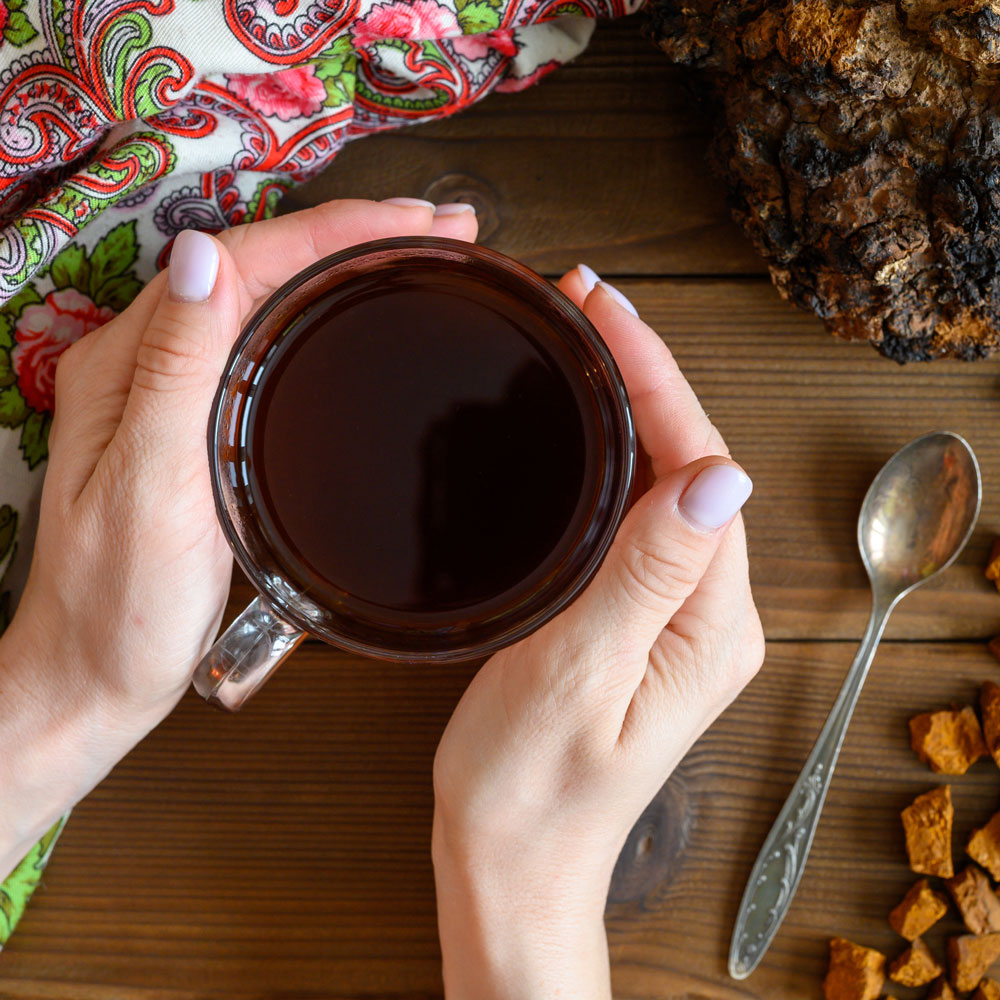Chaga, or the black ram (sometimes known as the birch hand), has been used for thousands of years around the world to support health, and in Eastern European folk medicine since the 16th century. century onwards. Chaga is particularly prized for its phenomenal antioxidant content, which can even fight cancer cells. Chaga, or black ram, also helps to support immunity and resist a wide range of pathogens, acting as a truly powerful natural medicine with no unpleasant side effects. What exactly is chaga and why and how to consume it? Let’s take a closer look.

Chaga as a powerful remedy for your health
The black chaga is a mushroom that grows on the trunk of a birch tree, which does not actually resemble a mushroom in the traditional sense, but rather an irregularly shaped sponge with a blackish, rough surface. Behind its rough surface, however, chaga hides a wealth of… vitamins A, B, C, D and E and abundant in minerals such as manganese, iron, calcium, zinc and selenium. In addition, chaga has super-powerful antibacterial, antifungal, antiviral, anti-inflammatory and antimicrobial properties that make it an effective antidote against all sorts of bad guys that have taken up residence in the body. Among other things, chaga is one of the best sources of betulinic acid. Betulinic acid fights viral and tumour-causing compounds in the body, and can also destroy cancer cells. High in betulinic acid, chaga is highly valued in alternative cancer treatment (and also cancer prevention). According to a number of studies, chaga is particularly effective for colon, stomach, endometrial, lung, breast and prostate cancers. Chaga has been the subject of much research, the results of which have only served to confirm the powerful properties of chaga.
Chaga is an immune system booster
Due to its high beta-glucan content, chaga is a truly powerful immune booster, being an excellent aid for sufferers of various chronic diseases (such as rheumatoid arthritis, lupus, fibromyalgia, irritable bowel syndrome, Crohn’s disease, polycystic ovary syndrome, etc.). Similarly, chaga is also helpful in HIV, helping to reduce many of the symptoms and secondary diseases caused by HIV. In addition, chaga contains an enzyme called superoxide dismutase, or SOD , levels of which are higher in chaga than in any other medicinal plant or fruit in the world. SOD promotes the breakdown of free radicals and has been shown to be a very effective treatment for Parkinson’s disease, Alzheimer’s and gout. Chaga’s anti-inflammatory properties work wonders for a range of inflammatory conditions, including colitis, asthma, celiac disease, tendonitis and various forms of arthritis. It can be said that chaga is truly a miracle cure, which can help both to improve health and to fight any disease!

Where does the black ram or chaga grow in the wild?
Chagas can be spotted on the trunks of birch trees, attracting attention mainly because of their blackish and rough surface. Chaga can be found growing not only in Europe, but also in the temperate forests of China, Russia, Canada and Korea, where it is known as “God’s gift”. Chagas can also be found in the northern United States and the Apalachee Mountains. To use the chaga and to make the powder, the ram is first carefully removed from the tree and then cut into 5-6 cm long pieces, which are then quickly dried at a low temperature (50-60°C). Dried chagas are stored in a dry and dark place. Chagat is sold in various health shops in powder, tincture and capsule form. Estonian chaga powder is waiting for you in the Elusväli e-store!
How to use black ram?
The most common way to consume black rye is to drink tea made from it. Black ram tea is incredibly beneficial because the antioxidants, vitamins and minerals it contains are easily absorbed and used by the body.
To make the tea, simply add 1 teaspoon of chaga powder to the cup and pour warm boiled water over it. Then let the tea stand for at least 30 minutes and up to 24 hours. The longer you let the tea brew, the more beneficial the drink becomes, as the Chaga’s healing properties are amplified while you stand. You can safely drink 2-3 cups of black ram tea a day. In addition to tea, you can also make a brew from chaga powder. For the pulling, mix 100g of powder with 3 glasses of boiled warm water (up to 50°C), let stand for 24 hours and then strain. The pot is usable for 3 days. The recommended daily dose is 1-3 teaspoons of chaga powder.
Chaga is a great addition to desserts!
Thanks to its dark, deep flavour bouquet, chaga powder is also ideal for smoothies, on top of porridge or as an addition to a variety of desserts, and even appeals to children. Add a couple of spoonfuls of chaga powder to the raw bars or make ice cream instead. The recipe below is perfect for this.
Deliciously creamy chaga ice cream
It takes:
- 3 frozen bananas
- ½ cup unsweetened almond milk or coconut milk
- 1-2 tsp chaga powder
- 1/2 tsp cinnamon
- 1/2 tsp ground cardamom
- 1 teaspoon non-alcoholic vanilla extract (optional)
- chopped pecans (to serve, optional)
Do this: Place all the ingredients in a food processor and process until a silky texture is achieved. Decorate with pecans and enjoy immediately!
In addition, with its rich, rustic and slightly coffee-like taste, Chaga is also the perfect substitute for coffee, refreshing the tired body and mind in case of afternoon fatigue, for example.
In the Elusväli e-shop you can find a selection of organic herbal remedies from Estonian organic growers, including chaga powder. Find out more about the Eeriksaare Väetee here.
Buy Estonian chaga powder HERE and try it!
The information provided in this article is for informational purposes only; it is not medical advice, diagnosis or treatment. If health problems occur, a doctor or health professional should be consulted. If you would like to use alternative or new medicines to support your health, please discuss this information with your doctor. Bring her a book and discuss whether and how therapeutic foods and supplements could be used in her recovery.




 All products
All products
 Powders
Powders
 Capsules
Capsules
 Tinctures
Tinctures
 Kits
Kits
 Brain health
Brain health
 Immunity
Immunity
 Nails and skin
Nails and skin
 Eyes and joints
Eyes and joints
 Liver health
Liver health
 Body cleansing
Body cleansing
 Babies and mothers
Babies and mothers
 Dry goods
Dry goods
 Natural sugars
Natural sugars
 Spices
Spices
 Natural cleaning products
Natural cleaning products
 Drinks
Drinks
 Dried fruit
Dried fruit
 Herbal teas
Herbal teas



